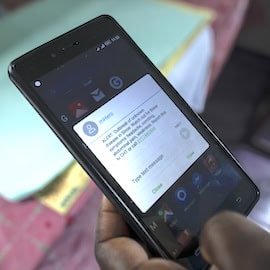Across emerging markets, digital health has become a promising approach for improving healthcare access in under-resourced communities. From telemedicine consultations to AI-assisted triage and SMS-based maternal care, technology is often seen as a bridge across the healthcare divide. But for the most vulnerable populations — those in remote, underserved or infrastructurally neglected regions — this bridge often ends before it reaches them.
Bringing healthcare to the “last mile” isn’t just about overcoming the challenges of physical distance. It’s about navigating poor network coverage, language mismatches, lack of trust in digital systems, and tools that don’t align with local workflows or realities. While digital health tools promise efficiency and equity, their effectiveness depends not just on their technological merit but on their real-world adaptability.
This article distills four critical lessons from digital health deployments across Africa and Asia — lessons that underscore why some digital health tools succeed in the last mile, while others stall. The goal is not to celebrate innovation for its own sake, but to reflect on what it truly takes to deliver healthcare with dignity, empathy and impact — especially in places where the need is greatest.
In Digital Health, Connectivity Determines Usability
One of the most persistent myths surrounding digital health in emerging markets is that mobile penetration alone guarantees access. While smartphone ownership is increasing, many last-mile regions still rely on basic feature phones, patchy mobile networks and intermittent electricity. Designing tools that assume consistent connectivity often leads to impressive demos but poor real-world uptake.
Digital health platforms that succeed in these environments are typically optimized for low-bandwidth or offline use. For instance, in Uganda, a randomized pilot of a patient-centered messaging intervention delivered health education and appointment reminders via SMS and automated voice calls: It found that sending texts to pregnant women’s social supporters improved their use of maternity services, resulting in higher percentages of skilled delivery and antenatal care visits. This illustrates how simple channels like SMS/voice can have an impact in settings where feature phones and patchy connectivity are common. Similarly, RapidPro, an open-source platform that supports UNICEF’s health, education and child protection initiatives, enables two-way communication over SMS/voice and has been deployed widely by governments and partners, making it a good fit where data access is limited.
Like-minded approaches have emerged to address connectivity challenges in other contexts. In Bihar, India, BBC Media Action and the state government deployed Mobile Academy, an interactive voice response (IVR) training course for community health workers that deliberately avoided data-heavy apps so these workers could use basic phones and keep working under patchy connectivity. The initiative also included Mobile Kunji, an IVR-based mobile service that health workers used alongside a printed deck of cards: Each card had an illustration reinforcing key messages about maternal and child health, along with a unique mobile shortcode corresponding to a specific audio health message. In Jharkhand, India, National Health Mission has supported CommCare–based workflows for community health workers that store data on-device and automatically sync to the server when any signal returns — this “auto-sync” prevents data loss and keeps visits moving even when networks drop. These workflows also include local-language audio prompts and low-literacy user interfaces for in-field guidance: Because the prompts can be preloaded on-device or delivered via IVR, they don’t rely on data plans or even smartphones, reducing dependence on Android and active internet while lowering literacy barriers. More recently, the state’s Sahiya (ASHA) App — which aims to streamline the work of community health workers and strengthen primary healthcare services — explicitly supports online, offline and Wi-Fi modes, reflecting how last-mile tools are now built for intermittent power and signal by design.
These examples point to a larger truth: Where power cuts are routine and 3G is a luxury, digital health tools must be built offline-first, with the ability to capture data on the device, then sync quietly in the background whenever a signal returns. By using asynchronous syncing, these tools pick up after interruptions so forms don’t vanish mid-visit, while their lean, text or voice-led interfaces load fast on low-cost handsets with minimal processing speed, memory and data. That approach represents the baseline for last-mile usability.
This principle extends beyond patient engagement: Feedback and experience monitoring must also work under the same constraints. In clinics with weak connectivity, offline survey tools let providers capture patient feedback at the point of care, store it on-device and sync when a signal returns, so nothing is lost.
Designing for this reality from the start means emphasizing durable, low-footprint software: offline-first workflows, background sync, and simple text/voice-led interfaces that run on low-cost devices and tolerate power cuts. That’s how tools stay dependable when connectivity can’t be guaranteed.
Trust Is the Real Infrastructure in Digital Health
Digital health tools don’t operate in a vacuum — they enter ecosystems shaped by histories of medical neglect, mistrust in institutions, and power imbalances between providers and patients. In many emerging markets, particularly in rural or marginalized communities, the greatest barrier to adoption isn’t technological complexity — it’s social skepticism.
Even when these tools are well-designed, communities may hesitate to use them if they’re unsure who controls the data, what will be done with their information, or whether engaging with the system could lead to scrutiny or stigma. In some regions, patients avoid digital feedback platforms in the healthcare space, fearing their responses could be traced back to them, especially in sensitive care contexts like sexual health or HIV treatment.
Successful programs tend to invest early in trust-building. In Kenya, digital health wallet M-TIBA gained traction by embedding its services within existing, trusted healthcare providers, rather than launching as a standalone product. By positioning itself as a supportive extension of known clinics, it aligned with existing patient relationships rather than disrupting them.
Language, tone and delivery channels also matter. In India, programs like mMitra and Kilkari deliver pre-recorded voice messages focused on different stages of pregnancy through IVR in local languages. An evaluation of mMitra showed improved maternal knowledge/practices, while a study of Kilkari demonstrated the program’s national-scale reach. These evaluations show that spoken, locally tailored messages can be more trusted and actionable than text alone in low-literacy contexts.
Building trust also extends to the feedback process for digital health solutions. When patients are asked for feedback on their experience with a digital tool but receive no follow-up, or when frontline workers feel their reports disappear into a digital void, faith in the system erodes. In contrast, platforms that prioritize transparency and timely acknowledgment of input help establish a feedback culture rooted in mutual respect.
In last-mile healthcare, trust isn’t a soft factor — it’s the foundation upon which usage, impact and continuity are built.
For Health Technologies, Localization Drives Impact
When health technologies are applied across borders without meaningful adaptation, they often lose effectiveness on arrival. Solutions designed in urban innovation hubs — shaped by Western clinical norms, English-only interfaces and optimistic infrastructure assumptions — frequently falter in remote or resource-limited settings. The gap isn’t due to software quality so much as to a misunderstanding of how care is actually delivered and experienced locally.
Localization goes far beyond translation. It means designing for the devices people actually use, aligning with community-health-worker routines and mirroring how care flows on the ground — from how patients move through a rural primary-care clinic to how maternal risk is assessed during home visits. It also requires the knowledge and use of the local terms people use for common symptoms.
You can see this in Burkina Faso’s IeDA (Integrated electronic Diagnosis Approach), a package of interventions built to enable the integrated management of childhood illnesses in primary health facilities. Teams iterated the program’s digital algorithm and interface to better match clinic workflows and local practices, including adapting question logic and terminology, and ensuring the app worked offline with background sync. These design features contributed to scale-up across hundreds of primary facilities and improved patient adherence. More broadly, implementers building these tools found that the rigid, fixed-sequence flow of typical clinical consultations often clashes with how clinicians actually consult, and that context-specific adaptations (e.g., local terms, navigation flexibility, content order) are often needed to maximize uptake and trust.
Facility-level patient feedback systems face similar localization issues. When questionnaires are designed without local input, they risk being irrelevant or even insensitive. In contrast, platforms that allow feedback customization at the facility/location level (affecting what to ask, how to ask, and in which language/channel) are more likely to produce actionable insights and real responses from managers. Evidence from Bangladesh and Kenya shows how frontline facilities collect, triage and act on patient feedback, and why visibility and a non-threatening environment are crucial for participation.
Designing with, not just for, local stakeholders can be the difference between shelfware and sustained impact. When communities see themselves reflected in a tool’s design, usage becomes more than compliance, it becomes ownership.
Feedback Loops Must Be Built-In
Collecting patient or provider feedback is often treated as a box-checking exercise. But in systems already strained by resource gaps and mistrust, gathering input without visible action can backfire. When people don’t see acknowledgement or change, participation drops and skepticism grows.
This isn’t hypothetical. In Tanzania, the SMS for Life initiative used weekly text messages from facilities to reveal antimalarial stock levels nationally. Visibility improved, but reporting often didn’t translate into timely resupply decisions, and the program was ultimately discontinued after scale-up, highlighting how data without an action pathway undermines engagement.
Closing the feedback loop means ensuring that feedback triggers a response, even if it’s a small one. It could be an SMS confirming receipt, a dashboard update visible to providers or a revised patient process prompted by recurring complaints. But regardless of what the response involves, it’s important to make it routine with clear ownership and timelines — and to acknowledge feedback quickly, resolve or escalate it within a defined window, and auto-escalate when deadlines slip. It’s also essential to keep updates accessible over the same low-bandwidth channels used to collect input (SMS/USSD/voice), and to queue changes locally so they sync when a signal returns (if internet connectivity is an issue).
For patient-facing experiences, the same rule applies: When people share feedback on wait times, cleanliness or staff behavior, they’re extending trust. Healthcare providers and facilities need to route it to the right owner, track it, resolve it and close the loop by telling patients what changed. When fixes are visible, participation climbs.
Additionally, it’s important to offer anonymous options for sensitive topics, and to say exactly how responses will be used. And it’s necessary to measure the feedback loop, not the survey count — including the time it takes patients to receive acknowledgement and resolution of their feedback, the percentage of feedback tickets closed with action, and the percentage where there’s a recurrence of the same issue — and to review those numbers in every staff meeting.
Designing Technology to Strengthen Last-Mile Healthcare
The effort to strengthen healthcare at the last mile doesn’t begin with cutting-edge technology, it begins with humility. The most effective digital health interventions in emerging markets aren’t necessarily the most sophisticated. They are the ones that recognize real-world constraints and design with them in mind: limited bandwidth, fragile trust, diverse languages and systemic feedback fatigue.
As the above lessons show, usability is defined by infrastructure realities, trust must be earned through transparency, localization should be embedded from the start and feedback must flow in both directions. These are not peripheral concerns, they are foundational. Without them, even the most well-funded digital tools risk becoming irrelevant.
Policymakers, implementers, funders and technologists have an opportunity to reframe how success is defined in digital health. Instead of focusing solely on adoption metrics or feature breadth, greater value lies in listening to frontline workers, adapting to community workflows and responding visibly to the feedback people share. Emerging markets aren’t test beds for outside pilots; they’re engines of local innovation shaping digital health models and, in turn, more resilient, responsive systems.
When digital health tools are built not just to function, but to fit, they stop being digital add-ons and start becoming critical infrastructure. And that’s when lasting health outcomes begin to take root.
Kaumudi Tiwari is a digital marketing expert who focuses on SEO and affiliate marketing at Zonka Feedback.
Photo credit: U.S. Agency for International Development
Publisher: Source link






